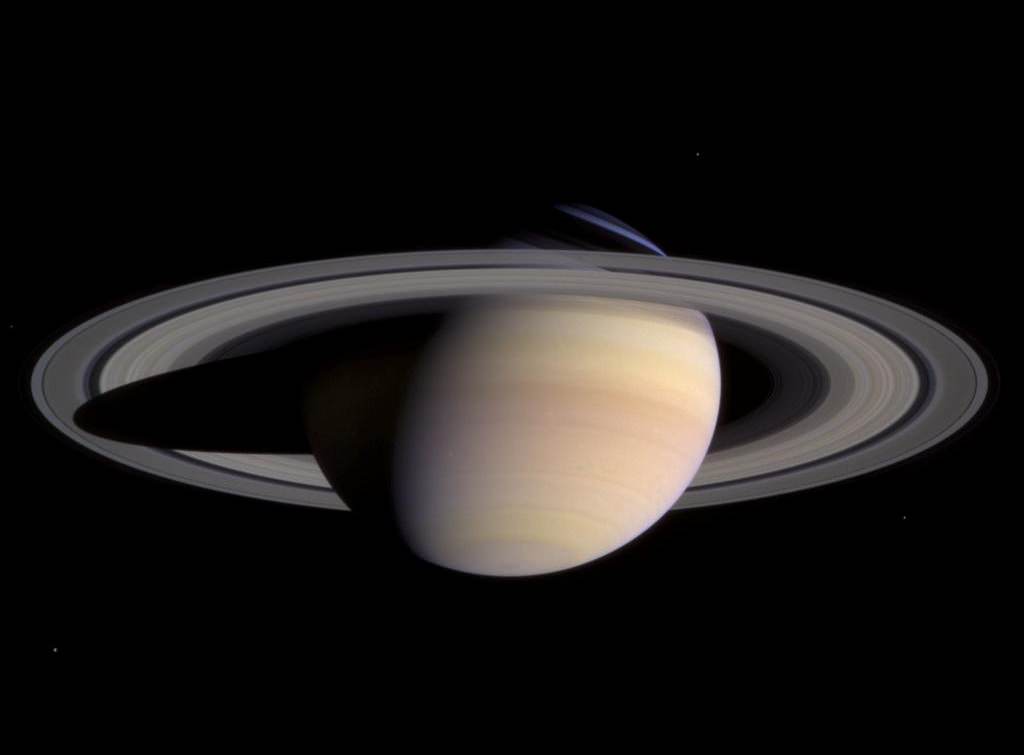[/caption]
Discovered by the Cassini mission, Saturn Kilometric Radiation (SKR) has been something of an enigma to astronomers. According to the radio and plasma wave instruments, variations occur in sync with the planet’s rotation. However, there are periodic “bursts” of radiation which are in line with Saturn’s magnetosphere. What makes this odd? The rate isn’t quite the same.
Thanks to investigations of Enceladus by Cassini in 2008, new information about the plasma environment surrounding Saturn’s satellite could show a marked impact on the magnetosphere. This image and video show a changing pattern of radio waves from Saturn known as Saturn Kilometric Radiation, as detected by NASA’s Cassini spacecraft. The colors indicate the emitted power of the radio waves, with red as the strongest.
How is it being affected? Thanks to Enceladus’ “spraying” nature, the huge plume of water vapor and ice from its southern pole provides a hefty source of plasma to feed Saturn’s magnetosphere and E-Ring. These negatively charged particles are again impacting the motion of the localized plasma.
“These signatures result from half or more of the electrons being attached to dust grains and by the interaction between the surrounding cold plasma and the predominantly negatively charged submicrometer-sized dust grains.” says M. W. Morooka (et al). “The dust and plasma properties estimated from the observations clearly show that the dust-plasma interaction is collective.”
According to the AGU Journal, this dust-plasma interaction impacts the dynamics of Saturn’s magnetosphere, possibly influencing the rate of SKR emissions.
Original Story Source: American Geophysical Union.


Here’s an earlier (2010) paper (PDF) by the same author(s):
Modification of the plasma in the near?vicinity of Enceladus by the enveloping dust.
Here’s an earlier (2010) paper (PDF) by the same author(s):
Modification of the plasma in the near?vicinity of Enceladus by the enveloping dust.
Speaking of the authors, 2nd auth. Jan-Erik was the teacher in the astrobiology course I took, and 3d auth. Anders is an all round swell guy, … and the list goes on.
Go IRFU (aka Swedish Institute of Space Physics) !
[/name-dropping]
I am not entirely sure how to look at the data. My sense is that this appears similar to the ion interaction between Io and Jupiter.
LC